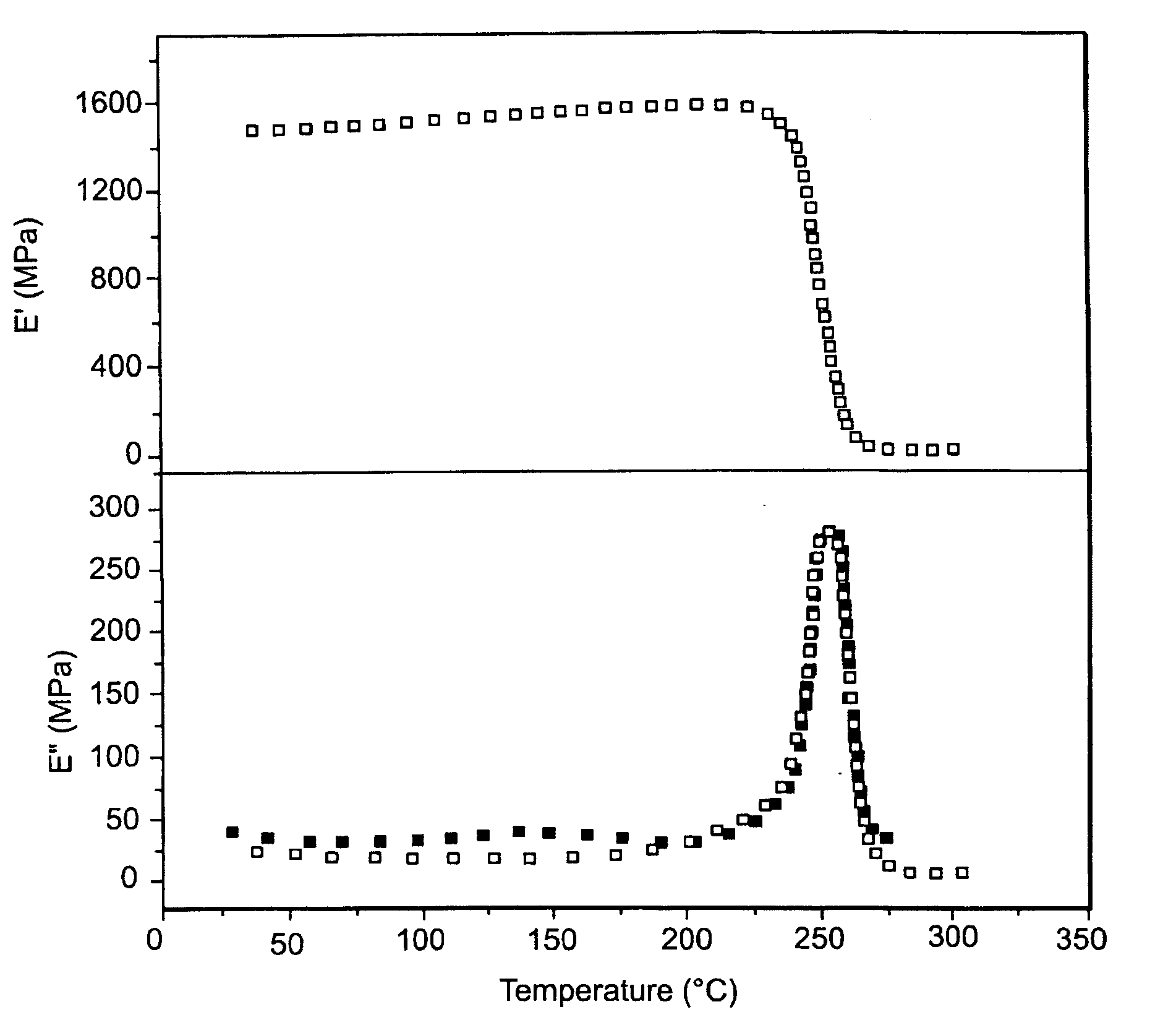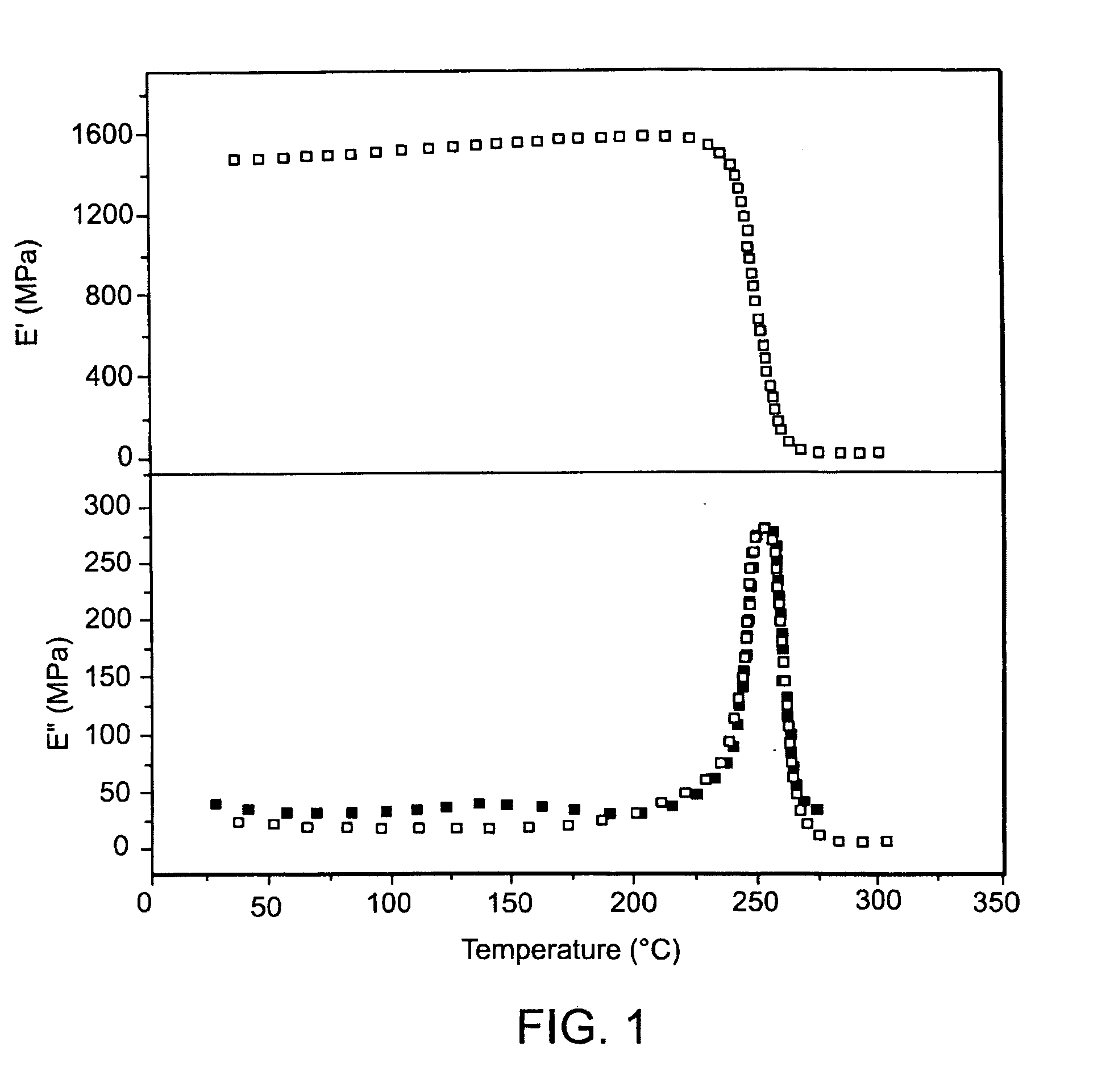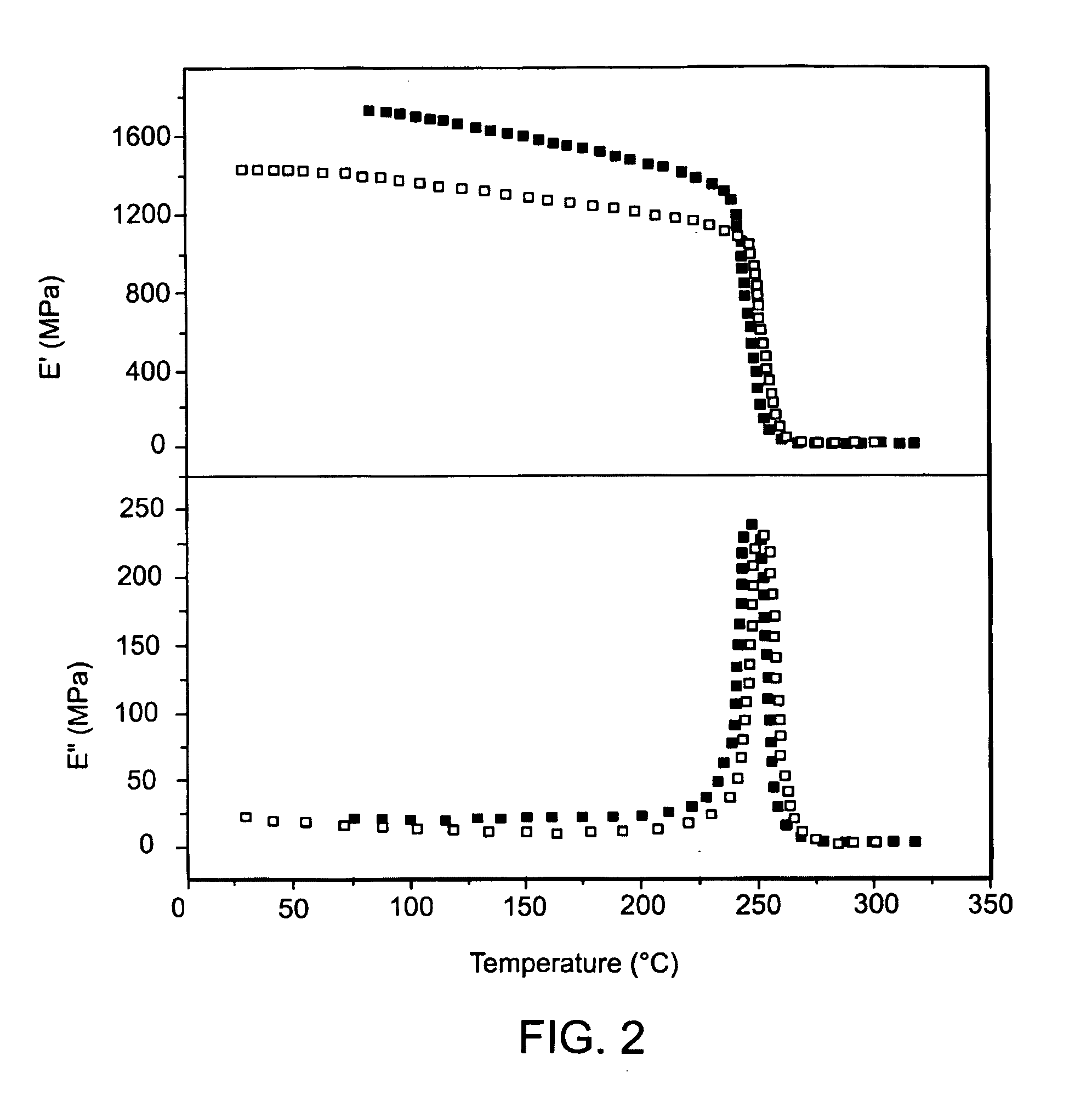Development and characterization of novel proton conducting aromatic polyether type copolymers bearing main and side chain pyridine groups
- Summary
- Abstract
- Description
- Claims
- Application Information
AI Technical Summary
Benefits of technology
Problems solved by technology
Method used
Image
Examples
example 1
Synthesis of 2,5-di(Pyridin-3-yl)benzene-1,4-diol
[0058]2,5-Dibromohydroquinone, tetrahydrofuran and 3,4-Dihydro-2H-pyran is added to a degassed flask. The solution is stirred at 0° C. under argon for 15 min. (+−)-Camphor-10-sulfonic acid(b) is added and the solution is stirred at room temperature for 8 hours. The precipitated product is filtered and washed with distilled water in order to remove excess CSA. A small amount of cold Hexane is added for better drying. The bis-(2-Tetrahydro-2H-pyranyl(1)acid)-2,5-dibromobenzene is dried under vacuum and product is obtained at a 90% yield.
[0059]Bis-(2-Tetrahydro-2H-pyranyl(1)acid)-2,5-dibromobenzene and distilled tetrahydrofuran is added to a degassed three neck flask fitted with a cooler, an additional funnel with septrum, and a thermometer. Butillithium solution is slowly added to the degassed solution at −80° C. The mixture is lifted for 3 hours at −40° C. Then the mixture is cooled again at −80° C. and trimethyl borate is slowly added...
example 2
Synthesis of copolymer dPPy(50)coPPyPES
[0063]Bis-(4-fluorophenyl)sulfone (3.147 mmol, 0.800 g), 2,5-di(Pyridin-3-yl)benzene-1,4-diol (1.573 mmol, 0.415 g), 2,5-Bis(4-hydroxy-phenyl)pyridine (1.573 mmol, 0.414 g), K2CO3 (3.650 mmol, 0.504 g), DMF (10.0 ml) and Toluene (6.5 ml) are added to a degassed flask equipped with a Dean-Stark trap. The mixture is degassed under Ar and stirred at 150° C. for 24 hours, and then stirred at 180° C. for 48 hours. The obtained viscous product is diluted in DMF and precipitated in a 10-fold excess mixture of MeOH, washed with H2O and Hexane, and dried at 80° C. under vacuum. The same procedure is followed to produce copolymer dPPy(40)coPPyPES, by varying the feed ratio of the two diols.
example 3
Synthesis of copolymer dPPy(50)coPPyPO
[0064]Bis(4-fluorophenyl)phenylphosphine oxide (2.548 mmol, 0.800 g), 2,5-di(Pyridin-3-yl)benzene-1,4-diol (1.274 mmol, 0.336 g), 2,5-Bis(4-hydroxyphenyl)pyridine (1.274 mmol, 0.335 g), K2CO3 (2.955 mmol, 0.408 g), DMF (9.0 ml) and Toluene (5.7 ml) are added to a degassed flask equipped with a Dean-Stark trap. The mixture is degassed under Ar and stirred at 150° C. for 24 hours, and then stirred at 180° C. for 8 hours. The obtained viscous product is precipitated in a 10-fold excess mixture of MeOH, washed with H2O and Hexane, and dried at 80° C. under vacuum. The same procedure is followed to produce copolymers with different 2,5-di(Pyridin-3-yl)benzene-1,4-diol molar percentage, by varying the feed ratio of the two diols.
PUM
| Property | Measurement | Unit |
|---|---|---|
| Fraction | aaaaa | aaaaa |
| Fraction | aaaaa | aaaaa |
| Fraction | aaaaa | aaaaa |
Abstract
Description
Claims
Application Information
 Login to View More
Login to View More - Generate Ideas
- Intellectual Property
- Life Sciences
- Materials
- Tech Scout
- Unparalleled Data Quality
- Higher Quality Content
- 60% Fewer Hallucinations
Browse by: Latest US Patents, China's latest patents, Technical Efficacy Thesaurus, Application Domain, Technology Topic, Popular Technical Reports.
© 2025 PatSnap. All rights reserved.Legal|Privacy policy|Modern Slavery Act Transparency Statement|Sitemap|About US| Contact US: help@patsnap.com



